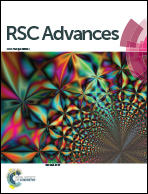Interaction-induced energy-level crossing and transport phenomena in topological insulators†
Abstract
A topologically insulating material, (Bi1−xSbx)2Te3 is studied in detail with respect to its resistivity measurements by evaluating these parameters—constituent chemical elements' valence states, as well as the defect types and their concentrations. Here, the ionization energy theory (IET) is exploited to unequivocally show that the electrical resistivity and carrier-type transition (n ⇌ p) for a (Bi1−xSbx)2Te3 topological insulator can be precisely captured in a consistent manner supported by experimental data. Subsequently, we expose why the insulating bulk and its topologically protected metallic surface are the two facets of the same topological insulator. In particular, these facets arise entirely from different chemical compositions and defects found in the bulk compared to its surface. Ionization energies, valence electrons and ‘special’ energy-level crossing with a finite energy gap are some of the notions that have been invoked within IET to derive the experimentally observable parameters, namely, the doping-dependent electron-ion scattering rate, resistivity and carrier-type transition. These parameters are then used to explain the experimental data obtained from (Bi1−xSbx)2Te3 and Pb1−xSnxSe compounds. In our final attempt, we use IET to unequivocally show that the topologically protected metallic surface states consist of special energy-level crossing where the crossed energy levels are not due to time reversal symmetry induced Kramers degeneracy.



 Please wait while we load your content...
Please wait while we load your content...